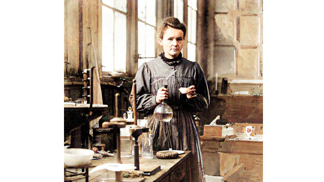Articles
Marie Curie Through the Decades
Posted on November 8, 2021

Marie Curie
“Nothing in life is to be feared, it is only to be understood. Now is the time to understand more, so that we may fear less.”
Marie Curie was a pioneer in the field of radiation research whose career was marked with many “firsts.”
Born November 7th 1867 in Warsaw, Poland, Marie was encouraged by her parents to pursue her interest in science from a very early age. A top student in her secondary school, Curie could not attend the men-only University of Warsaw. In spite of this, she continued her education in Warsaw's "floating university," a set of underground, informal classes held in secret.
In 1891, Marie moved to France to attend the University of Paris, where she became the first woman to earn a doctorate degree from a French university. There she shared a laboratory space with fellow scientist Pierre Curie. The two were married in 1895. Together, they studied radiation – discovering they could isolate the radioactive element from uranium. In 1903, Marie and Pierre were granted the Nobel Prize in Physics, making Marie the first woman to receive this prestigious award. She went on to become the first person to earn a second Nobel Prize.
After her husband’s death in 1906, Marie was appointed his seat at Sorbonne, making her the first female professor at the University.
Decades of handling radioactive materials - the effects of which were poorly understood at the time - ultimately took a toll on Curie. She died in 1934 of leukemia caused by high levels of radiation. She continued to set “firsts” even after her passing. In 1995 Marie and Pierre’s remains were moved to the Paris Pantheon, marking her the first Woman to be enshrined at the Pantheon through her own achievements.
Leave a Reply
Your email address will not be published. Required fields are marked *